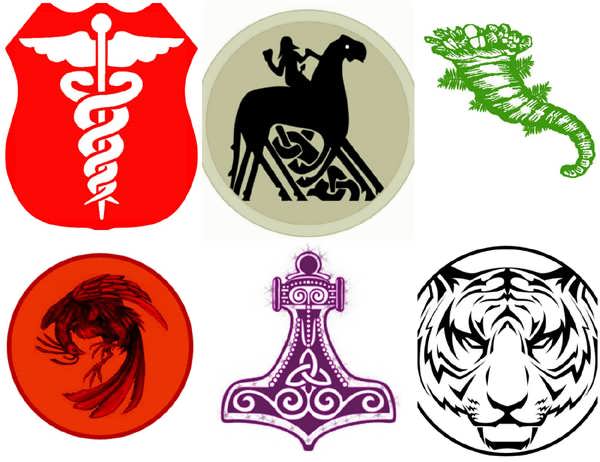Mythology permeates all cultures and affects all lives. The influence of myths can be seen in every culture’s customs, rituals, morals, and language. In fact, studying the underlying mythological beliefs and prominent mythological symbols is an effective method of studying a culture.
Different cultures have specific myths to help people understand the mysteries of nature, the reason behind all creation, their own relationship with nature and the essentials of moral conduct. These myths gave rise to a number of symbols that explain these diverse concepts.
Here are some mythological symbols of a few cultures.
Chinese Mythological Symbols
The Chinese have a concept of the Four Symbols that have astronomical significance. The ancient Chinese believed in four mythological creatures assigned to four different sections of the sky. These mythological symbols are:
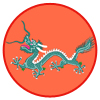 Azure Dragon: The mythical creature in the East and corresponding to the spring season. Though mighty and fearsome, the Azure Dragon is considered benevolent, just and a bringer of good fortune. Azure Dragon: The mythical creature in the East and corresponding to the spring season. Though mighty and fearsome, the Azure Dragon is considered benevolent, just and a bringer of good fortune. |
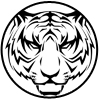 White Tiger: It is the creature in the West and corresponds to the autumn season. The White Tiger is regarded as a defender and protector. White Tiger: It is the creature in the West and corresponds to the autumn season. The White Tiger is regarded as a defender and protector. |
|
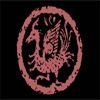 Black Tortoise: The creature in the North. It corresponds to the winter season and is representative of longevity and wisdom. Black Tortoise: The creature in the North. It corresponds to the winter season and is representative of longevity and wisdom. |
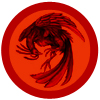 Vermillion Bird: It is a mythological creature in the South and corresponds with the summer season. It symbolizes good luck. Vermillion Bird: It is a mythological creature in the South and corresponds with the summer season. It symbolizes good luck. |
|
| Greek/Roman Mythological Symbols |
| Roman mythology borrows heavily from the Greek mythology. A number of Greek Gods have Roman counterparts, i.e., they are the same Gods but with different names.Some important Greek/Roman mythological symbols are: |
|
 Cornucopia (horn of plenty): Made from the horn of the goat Amaltheia, Cornucopia was believed to provide an inexhaustible supply of food and drink whenever needed. It symbolizes the infinite nature of the universe and the endless flow of energy all around. It also emphasizes the importance of giving and taking. Cornucopia (horn of plenty): Made from the horn of the goat Amaltheia, Cornucopia was believed to provide an inexhaustible supply of food and drink whenever needed. It symbolizes the infinite nature of the universe and the endless flow of energy all around. It also emphasizes the importance of giving and taking. |
 Caduceus: It represents the myth in which the Roman god Mercury (Greek god Hermes) got involved between two fighting serpents who then wrapped themselves around the god’s wand. The Caduceus symbolizes good conduct and moral equilibrium. It also represents the integration of the four natural elements. Caduceus: It represents the myth in which the Roman god Mercury (Greek god Hermes) got involved between two fighting serpents who then wrapped themselves around the god’s wand. The Caduceus symbolizes good conduct and moral equilibrium. It also represents the integration of the four natural elements. |
|
 Ears of Corn: Ears of corn are considered sacred to Greek goddess Demeter (Roman goddess Ceres), and represent fertility and abundance. Ears of Corn: Ears of corn are considered sacred to Greek goddess Demeter (Roman goddess Ceres), and represent fertility and abundance. |
|
|
| Egyptian Mythological Symbols |
| Some significant symbols in Egyptian mythology are: |
|
 Phoenix: The Phoenix is a sacred firebird in Egyptian mythology. It is said that when its life-cycle ends, it ignites its nest, burns in it and emerges from the ashes as a young Phoenix. This mythical bird symbolizes immortality, rebirth, and life after death. Phoenix: The Phoenix is a sacred firebird in Egyptian mythology. It is said that when its life-cycle ends, it ignites its nest, burns in it and emerges from the ashes as a young Phoenix. This mythical bird symbolizes immortality, rebirth, and life after death. |
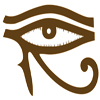 Wedjat Eye/Eye of Horus: Horus is the Egyptian falcon god, and the Wedjat Eye is believed to have the powers to heal and protect against evil. Wedjat Eye/Eye of Horus: Horus is the Egyptian falcon god, and the Wedjat Eye is believed to have the powers to heal and protect against evil. |
|
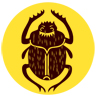 Scarab: Egyptian mythology holds that the sun is pushed into the sky every day at dawn by the scarab beetle. The scarab symbolizes great power and determination. Scarab: Egyptian mythology holds that the sun is pushed into the sky every day at dawn by the scarab beetle. The scarab symbolizes great power and determination. |
|
|
| Norse Mythological Symbols |
| The Norse mythology also has a number of powerful symbols. These include: |
|
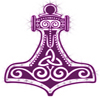 Thor’s Hammer (Mjolnir): The magical weapon of the Norse god Thor, Mjolnir symbolizes strength, protection, and consecration. Thor’s Hammer (Mjolnir): The magical weapon of the Norse god Thor, Mjolnir symbolizes strength, protection, and consecration. |
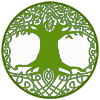 Yggdrasil: This huge mythological ash tree is believed to encompass the Nine Worlds or hold all the realms of existence together. Yggdrasil: This huge mythological ash tree is believed to encompass the Nine Worlds or hold all the realms of existence together. |
|
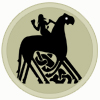 Sleipnir: It is the legendary ride of Odin, the father of Norse pantheon. This eight-legged horse carries Him through the world of matter and the world of the gods. It symbolizes the shamanic journey, and its legs represent the eight spokes of the solar wheel. Sleipnir: It is the legendary ride of Odin, the father of Norse pantheon. This eight-legged horse carries Him through the world of matter and the world of the gods. It symbolizes the shamanic journey, and its legs represent the eight spokes of the solar wheel. |

